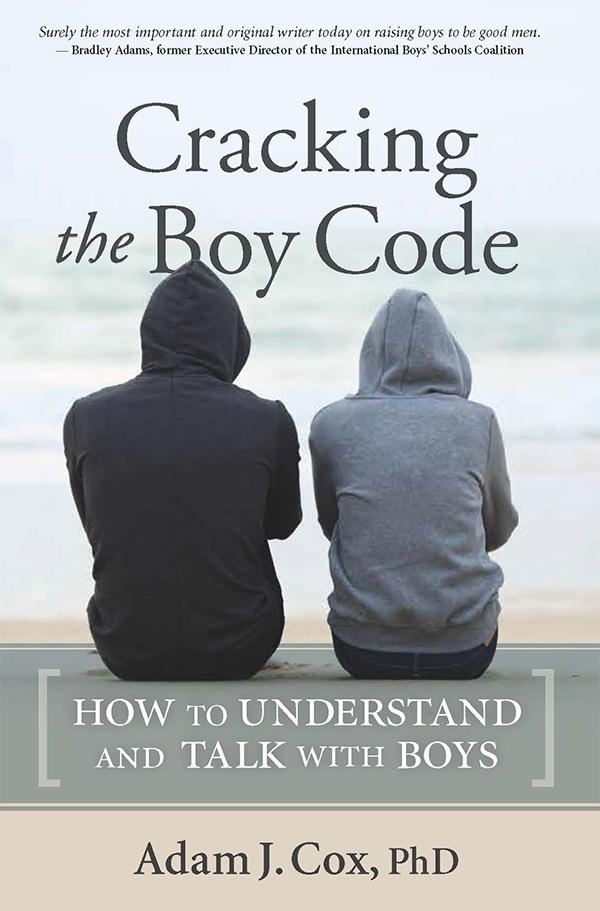In the last issue of Family Matters, we discussed the possibility that some types of social deficits, particularly those involving communication, may not warrant a diagnosis of autism, or an autism- spectrum disorder such as Asperger’s syndrome. Instead, they may be more characteristic of more common developmental challenges (such as a non- verbal learning disabilities).
In this issue, let’s tackle the big one – ADHD. More specifically, let’s discuss five behavioral issues which are not ADHD. While these difficulties may be found along with ADHD, that doesn’t mean that they are symptoms of ADHD.
The five problems we’ll discuss are Anxiety, Depression, Disruptive Behavior, Learning Disabilities, and Sensory Integration Disorder. Please believe me – I don’t want to make your life more complicated! Yet if we wish to approach treatment and outcomes with a degree of scientific objectivity, an accurate understanding of a child’s behavior is essential. Unfortunately, we live in a time when all kinds of behavioral problems are herded under the umbrella of ADHD. But what if some attention problems have a different foundation, and what if psychostimulant medication isn’t always the best response to behavioral problems – even those that appear to involve hyperactivity?
Anxiety is a problem that may easily affect attention because a child can be preoccupied with internal thoughts or worries. As a consequence, he or she may appear to be zoning out. An important question to consider is whether your child is equally distracted when he or she is relaxed. If not, situational factors may be triggering anxiety and inattention. Sometimes children who do not know how to handle a worrisome situation, or who have difficulty expressing their feelings, “clam up.” Don’t you have a harder time concentrating on work if you’re nervous or worried about a personal situation? It can be much more difficult for a child to articulate his or her worries. A concern that seems trivial to adults can also cause great anxiety for a child, as well. For example, a preschool boy was very worried in school until it was discovered that he was having trouble handling his buckles and snaps at the bathroom break but was afraid to ask for help; a 7th grade girl couldn’t focus in her Language Arts class because she was seated next to a girl who had mocked her in gym.
Depression is a mood disorder which can impair executive thinking skills like working memory, cognitive flexibility, planning, and attention. Depression turns our mind’s idle down, and as a result we can appear “out of it” – but the cause is not ADHD. Irritability, lack of initiation or interest, and inattention may be symptoms of depression or ADHD. Of course, most children can’t describe exactly what they feel, or whether a mood problem or poor focus came first. In such cases, it is critical to evaluate a child’s behavior in multiple contexts, and to determine if an improvement in mood helps focus. (Some dual-action antidepressants such as Effexor, which effect norepinephrine, enhance executive thinking skills much better than other antidepressants. Please consult your doctor about possible advantages of dual-action antidepressants for children with both a low mood and executive dysfunction).
Disruptive Behavior is an especially prevalent problem in school. Some kids just won’t settle down and are a significant learning liability for other students. Sometimes, disruptive behavior is mistaken for hyperactivity. Indeed, hyperactivity may lead to disruptive behavior, but they are not the same thing. All kinds of kids can be disruptive, sometimes intentionally. A hyperactive child has trouble slowing down, even though he may wish to. An intentionally disruptive child may be feeling frustrated by classroom expectations, rebelling against authority, developing self-control at a slower rate than peers, or seeking attention. If a child is invested in gaining attention through mischief, loudness, or intrusion, a medicine such as Ritalin is not likely the best course of treatment.
Learning Disabilities may affect one or more subject areas, as well as social interaction. It stands to reason that if a child has a learning problem, in reading for example, he or she will be less attentive to that aspect of instruction. A learning disability can certainly be exacerbated by ADHD, but ADHD itself is better understood more as a learning liability than something like dyslexia – a specific learning disability.
Sensory Integration Disorder (SID) is a problem with either being oversensitive or undersensitive to sensory stimuli. These problems can make a child appear either hyperactive or inattentive. This disorder is often confused with ADHD, especially in preschool children whose sensory integration difficulties undermine “self-control.” A child with a sensory integration disorder may be distressed by loud noises, bright lights, rough textures, or smells; or conversely, may need to handle things, hang upside-down, or shout boisterously. For an excellent discussion of Sensory Integration Disorder, read Carol Stock Kranowitz’s book, The Out-of Sync Child.
Each of the disorders described above could potentially be found along with ADHD, in which case both disorders need to be treated. Without question, ADHD is major health epidemic facing children. The Center for Disease Control and the World Health Organization have affirmed this fact. In the midst of managing this crisis, we’ve got to work hard to resist “one size fits all” thinking. Let’s make sure children’s behavior is carefully evaluated and understood within a social and emotional context. If we were the person being treated we wouldn’t expect or accept anything less!
What’s News
 Are you the parent of a child from generation M? In case you haven’t heard, genM is the multitasking generation – at least according to a recent issue of Time magazine (see right). The article discusses a concern common to many parents – kids who are totally and unendingly plugged-in! Electronics have given us increased power to multitask, and our brains are being changed in the process. The Time article points out that the cost of breadth is depth. In essence, if you’re going to do and focus on more, you can only go so deep into a particular task.
Are you the parent of a child from generation M? In case you haven’t heard, genM is the multitasking generation – at least according to a recent issue of Time magazine (see right). The article discusses a concern common to many parents – kids who are totally and unendingly plugged-in! Electronics have given us increased power to multitask, and our brains are being changed in the process. The Time article points out that the cost of breadth is depth. In essence, if you’re going to do and focus on more, you can only go so deep into a particular task.
Multitasking relies on what is called Brodman’s area or the anterior cingulate. This is a part of the prefrontal cortex, which is crucial to executive thinking skills. Consciously or not, many of us positively reinforce kids who are efficient and productive – the common denominators of multitasking. It seems time to seriously consider – productivity at what cost? GenM kids have been raised on multitasking, and it’s not likely they will give up that “drug” any time in the near future. Our job as parents and teachers is showing them how to use the drug wisely.
Click here to view the Time Magazine article.
Ask Dr. Cox…
Question: Our six year-old makes mornings the most stressful part of the day. He just will not get dressed and we’re always late leaving the house. No amount of pleading makes a difference – help!
Answer: You’ve hit on an age-old classic: conflicting time frames. As adults, we are slaves to the clock and it’s hard to remember that kids experience and understand time far differently than we do. Does this mean that you have to give up the quest of having the kids neatly packed into the station wagon before the morning bell rings? Of course not! But your strategies for success should be guided by the knowledge that: 1) Your six year- old does not have fully developed executive planning skills. 2) Six-year olds can be motivated to get dressed on time, and, 3) This can become his challenge, not yours.
Assuming he’s not having trouble with the mechanics or sensations of getting dressed (can button and tie, clothes don’t literally “rub him the wrong way”—see SID above), let’s consider your approach first. To be successful, your son needs to know that he’s expected to get dressed in the morning, have a motivating reason to get dressed, consequences if he doesn’t, and a way of keeping track of time that’s meaningful to him—a six year-olds don’t know what “15 minutes” feels like. To start, outline your expectations (no pleading!): “From now on, your job is to get dressed in the morning during dressing time.” Give a concrete example of how much time it should take him: “Dressing time will be as long as it takes us to drive to school. To help you remember how much time you have, we’ll play a tape (choose a 15-minute cassette), or we’ll set this clock. (Use a visual clock, such as a Time Tracker) “Your clothes will be on your chair. There will be no (television, toys, whatever the distraction that has been keeping him from getting dressed) until you’re dressed, but every time you’re dressed on time, we’ll add a star to this chart. If you get five stars, we’ll (insert reward). I know you can do it!”
Keep your tone matter-of-fact and upbeat. You may want to get up a little earlier to leave time for unstructured play after dressing. Remember that we all are more motivated by praise than criticism. Notice and reward compliance with words like: “Nice job, I like how you’re getting dressed. You’re going to set a speed record! That’s responsible, and you can be proud of yourself, etc.” If he doesn’t get started, issue a prompt or two, then let him experience some consequences. Rather than working yourself into a sweat five days a week, it may be worth arriving to school late one day and let him explain to the teacher why he made you late.
Question: My daughter has discovered the value of money. I don’t feel like an eight year-old should be so fixated on what she’s going to buy. I didn’t even get an allowance until I was twelve! Should I give her money – and how much?
Answer: A child who has discovered the value of money now has the opportunity to learn the value of time and hard work. In other words, this is an ideal “teaching moment” to discuss with her the concept of money as a resource. Where does money come from? How do we earn it? How long and hard do people work for money in our country and elsewhere? Is there a way that she can earn some? Why should we save and share? Everyone should contribute to the household, so every chore a child performs does not require compensation. However, if she won’t lose it, a small amount of cash—such that you would normally use to buy her little items and treats during the course of the week—can be put in her control in the form of an allowance to help teach her how to manage money. If she wishes for more money, you may be able to find some additional jobs (above and beyond normal chores) around the house for her to do. Decide together, in advance, how much she’ll spend, how much she’ll save, and how much she’ll donate to a charity of her choice.
Question: My mother gets very upset with my children for normal “kid” stuff—running, talking loudly, even giggling at meals. I’ve tried explaining that they need to act differently when grandmother watches them, but no matter how hard they try it always ends up with anger and tears between them.
Answer: You need a new babysitter. While children need to learn about differences between indoor behavior and outside play, acting respectfully toward elders, and good manners, what you’re describing is a basic disconnect between expectation and reality. A child is not an adult, and caretakers need to have a basic understanding and acceptance of a child’s capabilities. Free child care isn’t without high cost if it is inappropriate care. Perhaps your mother is not physically or emotionally able to be the primary caretaker for your children, but she may be able to enjoy visiting with her grandchildren while you’re there. During those times, you may be able to gently incorporate your knowledge of child development in your conversations. You can also mediate potential conflicts: “Charlie, grandma would probably rather just look at your toad than hold it,” or “Mom, after school the kids need to run around and burn up some energy. Shall I take you home, or would you prefer to relax out on the porch?”
Do you have a question for Dr. Cox? Email it to: Ask Dr. Cox
Please begin your comments with “Question for Dr. Cox.” Your query could be answered in a future issue.
Adam Cox, PhD, ABPP
Ordering Boys of Few Words: Raising Our Sons to Communicate and Connect Online
For our international subscribers, we’d like to add these links:
Via the web: http://www.guilfordpress.co.uk
Orders from UK/Europe: Taylor & Francis, Thomson Publishing Services, Cheriton House, North Way, Andover, Hampshire, SP10 5BE, UK Tel: +44 (0) 1264 343071 Fax +44 (0) 1264 343005 Email: book.orders@tandf.co.uk




